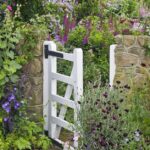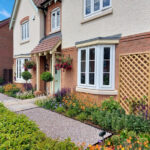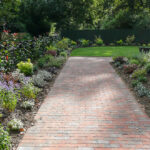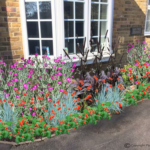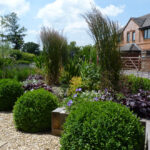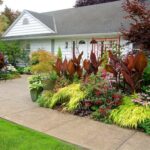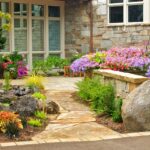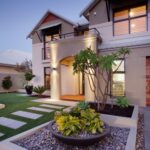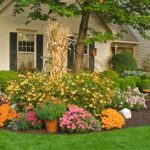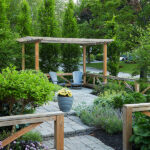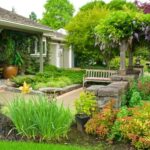Front garden design is an important aspect of any home’s exterior aesthetic. A well-designed front garden not only enhances the overall appearance of a property, but also creates a welcoming and inviting atmosphere for residents and visitors alike. There are a multitude of design options available to homeowners looking to spruce up their front gardens, from traditional and formal layouts to more contemporary and eclectic styles.
One key element of front garden design is consideration of the overall aesthetics of the home. The style, color scheme, and architecture of the house should serve as inspiration for the design of the front garden. For example, a modern home with clean lines and minimalistic features may benefit from a front garden with simple, geometric shapes and a monochromatic color palette. On the other hand, a traditional farmhouse could be complemented by a garden filled with lush, cottage-style plants and flowers.
Another important aspect to consider when designing a front garden is the functionality of the space. Front gardens serve as the first impression of a home and should be both visually appealing and practical. Paths, walkways, and driveways should be carefully planned to ensure easy access to the front door, while also providing a sense of direction and flow throughout the garden. Additionally, seating areas, lighting, and other features can be incorporated to create a welcoming ambiance for residents and guests.
Plant selection is a crucial component of front garden design, as the plants and flowers chosen will greatly influence the overall look and feel of the space. Homeowners should consider factors such as climate, sunlight exposure, and soil conditions when selecting plants for their front garden. The choice of plants can also be used to create focal points, add color and texture, and enhance the overall design scheme of the garden.
Incorporating hardscaping elements into the front garden design can help to define the space and create visual interest. Features such as pathways, retaining walls, fences, and decorative stones can be used to add structure and depth to the garden. Hardscaping elements can also serve practical purposes, such as providing seating areas, enclosing flower beds, or directing foot traffic.
Finally, maintaining the front garden is essential to ensuring that it remains looking its best year-round. Regular watering, weeding, pruning, and fertilizing are necessary tasks to keep plants healthy and thriving. Additionally, seasonal maintenance such as mulching, trimming, and cleaning up debris will help to keep the front garden looking neat and well-maintained. By investing the time and effort into designing and maintaining a front garden, homeowners can create a beautiful and welcoming space that adds value and curb appeal to their property.

